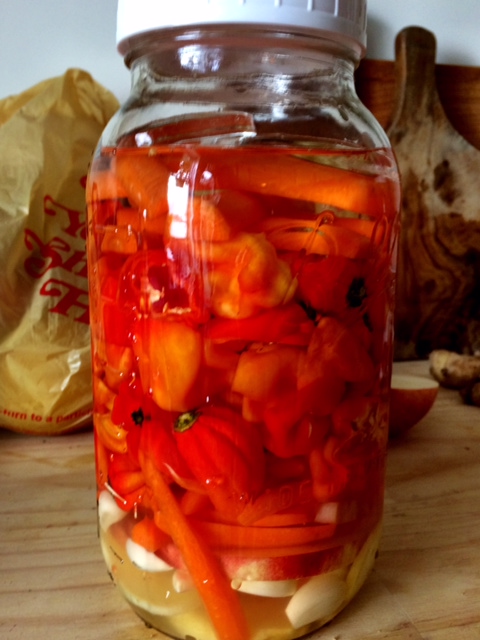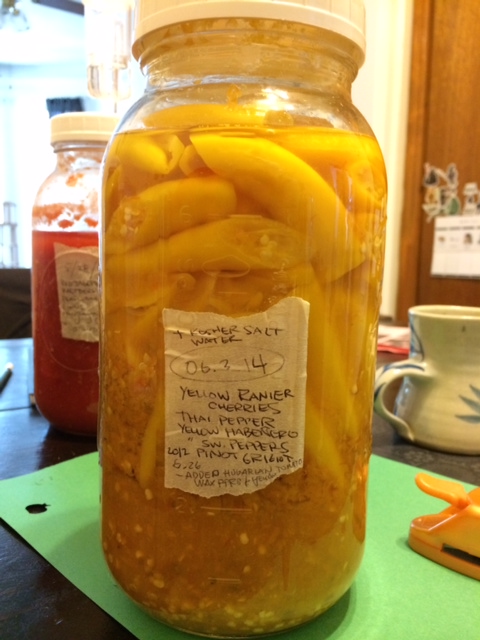So here is what I'm planning, would love some opinions before I commit. Nephews went strawberry picking and I just harvested some rhubarb from the garden so I figured why not combine them? Recipe is a work in progress, will assemble and start the ferment tomorrow ...
3/4 lb Habaneros
1 lb Strawberries
1/2 lb Rhubarb
1 Small Sweet Onion
7-8 Cloves Garlic
3-4 tbsp Whey from Yogurt
2 Cups brine to cover
Anything I'm missing? I was debating doing half the habaneros and using a red pepper (thai, cayenne or something) but I think the fruitiness of the habs would play well. This will be my first hot sauce ferment so please hit me with suggestions/thoughts. I will post pics when I start to assemble.
3/4 lb Habaneros
1 lb Strawberries
1/2 lb Rhubarb
1 Small Sweet Onion
7-8 Cloves Garlic
3-4 tbsp Whey from Yogurt
2 Cups brine to cover
Anything I'm missing? I was debating doing half the habaneros and using a red pepper (thai, cayenne or something) but I think the fruitiness of the habs would play well. This will be my first hot sauce ferment so please hit me with suggestions/thoughts. I will post pics when I start to assemble.






